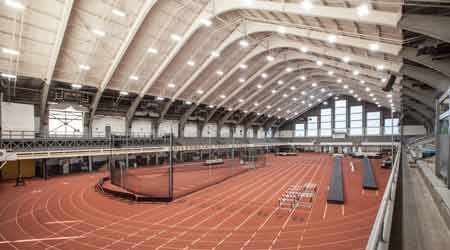LEDs are one of the most energy-efficient and quickly evolving lighting technologies and offer the potential to fundamentally change the future of lighting in institutional and commercial facilities, according to an article from Facility Maintenance Decisions on the FaciltiesNet website.
Widespread use of LEDs could save the equivalent annual electrical output of 44 large electric power plants by 2027, a total savings of more than $30 billion at today’s electricity prices, according to the U.S. Department of Energy.
he main advantage of upgrading from an incandescent or fluorescent lighting system to an LED system relates to energy cost savings over the life of a facility. Ultimately, managers need to consider several factors when looking to implement the latest technology, but here are a few considerations to keep in mind when contemplating an upgrade:
• Can the current lighting control system or network support the features of the LED fixtures?
• 0-10V dimming, DMX, or DALI systems are good candidates for controlling LED fixtures while providing support for the color tuning, color mixing, and other controllability functions available.
• The proper recycling of old fluorescent or mercury vapor lighting fixtures is important. Managers need to check with the local jurisdiction to ensure workers use proper recycling procedures.
Beyond making strides in the use of LEDs in displays and mobile devices, LED and solid-state lighting manufacturers also have improved LED technology since becoming widely used in commercial building lighting applications.

 UF Health Hospitals Rely on Green Globes to Realize Their Full Potential
UF Health Hospitals Rely on Green Globes to Realize Their Full Potential How Healthcare Facilities Can Be Truly Disaster-Resilient
How Healthcare Facilities Can Be Truly Disaster-Resilient TriasMD Breaks Ground on DISC Surgery Center for San Fernando Valley
TriasMD Breaks Ground on DISC Surgery Center for San Fernando Valley Bigfork Valley Hospital Falls Victim to Data Breach
Bigfork Valley Hospital Falls Victim to Data Breach AI-Driven Facilities: Strategic Planning and Cost Management
AI-Driven Facilities: Strategic Planning and Cost Management